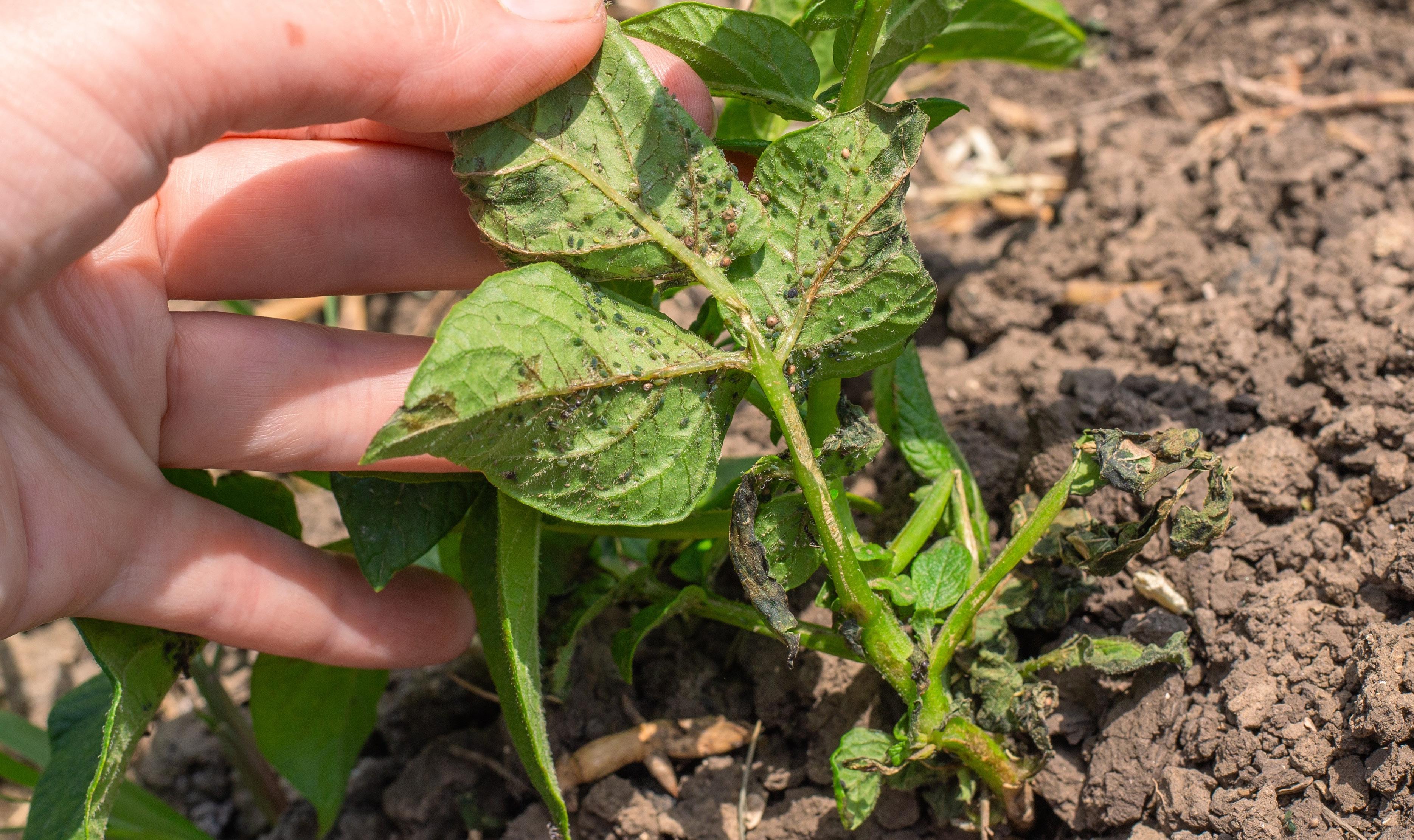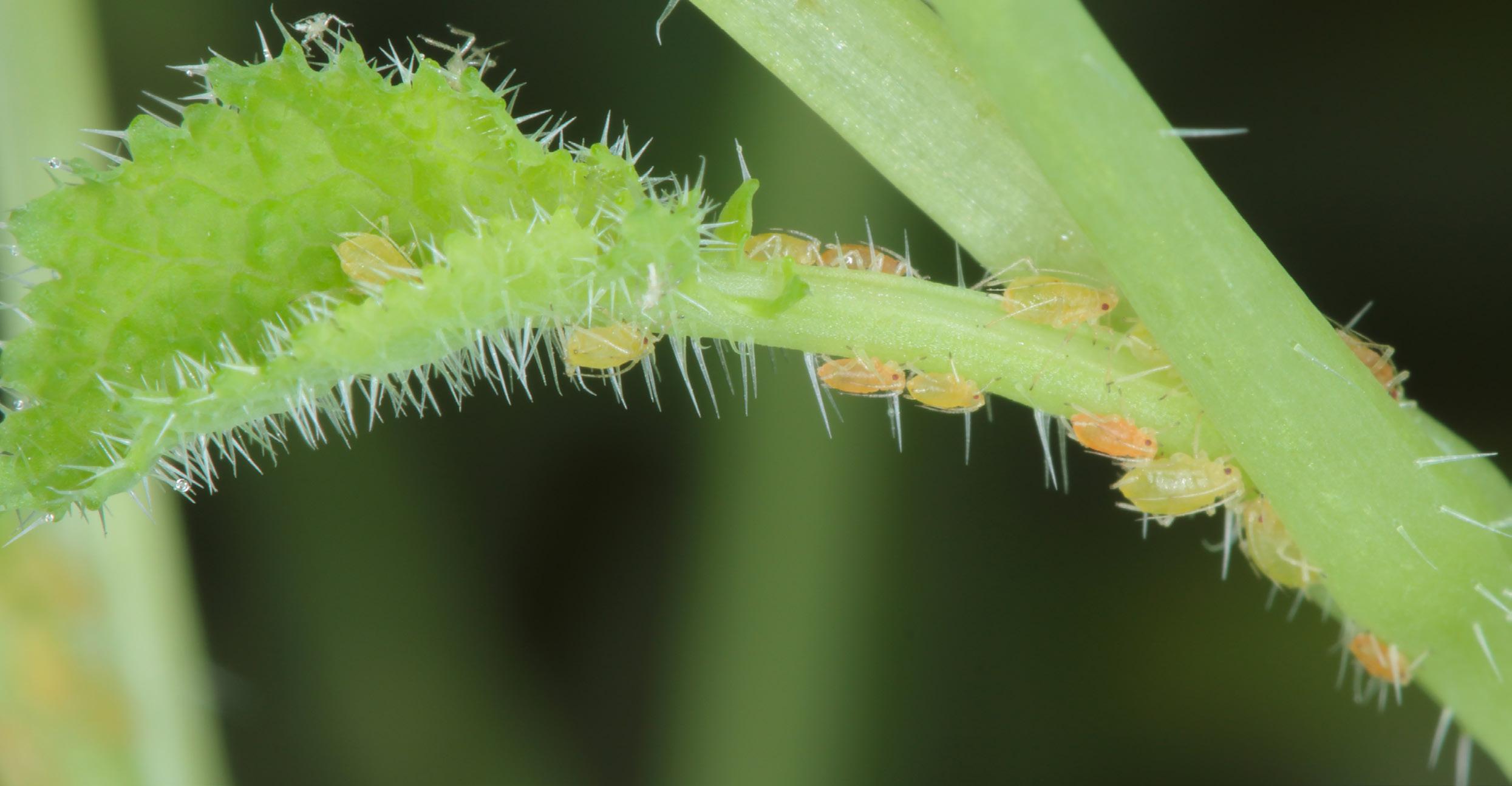Aphid Control in Potato Crops.
Checking for the presence of winged aphids in crops especially during periods of warmer weather is vital and gives you time to consider control options if aphids are present.



Checking for the presence of winged aphids in crops especially during periods of warmer weather is vital and gives you time to consider control options if aphids are present.


Aphids are among the most significant pests in potato production, primarily due to their role as vectors of plant viruses.
They are responsible for transmitting more damaging viruses than any other pest group.
Two of the most economically important viruses in potatoes, Potato Leafroll Virus (PLRV) and Potato Virus Y (PVY) are both spread by aphids.
Infected plants can suffer from stunted growth, reduced tuber yields, and a decline in overall crop quality, with seed potatoes posing a particular concern due to the risk of virus carryover.
Effective aphid control is therefore critical, especially in seed potato crops, where virus prevention is paramount.
Control programmes should be guided by official aphid forecasting systems, such as those provided by regional agricultural authorities, and should commence as soon as virus risk warnings are issued or when local monitoring detects early signs of aphid migration.
In ware crops, while the virus risk is generally lower, unchecked aphid populations can still impact yields and marketability. Sprays should be applied once aphid numbers begin to rise significantly and approach or exceed threshold levels established by local guidelines or historical farm data.
An integrated pest management approach - combining crop monitoring, forecasting tools, and targeted insecticide applications offers the most effective strategy for maintaining healthy, productive potato crops throughout the season.
TARGETED INSECTICIDES FOR APHID CONTROL IN POTATOES
EC formulation, 50 g/l lambda-cyhalothrin View Product
LANARK™
CS formulation, 100 g/l lambda-cyhalothrin

Summer aphid control – staying vigilant Checking for the presence of winged aphids in crops especially during periods of warmer weather is vital and gives you time to consider control options if aphids are present.
Clayton Sparta™ and Clayton Lanark™ both offer cost-effective control options for a wide range of aphids in potatoes.
Aphids transmit a number of unwanted plant viruses, in fact more damaging plant viruses are transmitted by aphids than any other group of pests.
Crops infected with Potato leaf roll virus or Potato virus Y can reduce yields and infect tubers, causing significant crop damage.
Aphid control programmes in seed crops should commence according to official forecasting risk warnings or if local aphid migration risk has been identified. In ware crops, spray treatments should commence when aphid numbers are building rapidly and reach threshold levels.
Clayton Sparta™ and Clayton Lanark™ are targeted insecticides and offer effective control of a wide range of disease-transmitting aphids in potatoes, including Peach-potato aphid, Potato aphid, Buckthorn-potato aphid and others.
Pyrethroid insecticide for the control of aphids in potatoes.
Active Ingredients: 50 g/l lambda-cyhalothrin
Emulsifiable Concentrate
Use Rate & Timings: Apply at 0.15 l/ha for a maximum of 4 treatments per crop (maximum total dose 0.6 l/ha) with a minimum interval of 7 days between applications. Seed / Ware crops - Spray upon professional advice or immediately threshold levels are reached. Repeat at 7-14 days as necessary whilst aphids present a risk. To discourage aphid feeding (so as to minimise virus transmission) and to control aphids already in the crop use Clayton Sparta in mixture with another insecticide with an alternative mode of action. This also ensures good resistance management practice. Observe any label restrictions on the partner product.
Target Pests: Aphids, including Peach-potato aphid (Myzus persicae),Potato aphid (Macrosiphum euphorbiae) and others.

High-loaded pyrethroid insecticide for the control of aphids in potatoes.
Active Ingredients:
g/l lambda-cyhalothrin
Capsule Suspension
Use Rate & Timings: Apply at 75 ml product/ha for a maximum of 4 treatments per crop (maximum total dose 300 ml product/ha) with a minimum interval of 7 days between applications. Use a water volume of at least 400 L/ha and use sufficient water volume to ensure thorough crop penetration. Apply according to specialist advice at aphid egg hatch and repeat 10-14 days later. The latest time of application is eight weeks before harvest.
Ware crops: Use Clayton Lanark for the control of potato aphid and other aphids. Where resistant forms of peach-potato aphid are present or suspected Clayton Lanark should not be used. Clayton Lanark can also provide incidental control of other pests e.g. cutworms if the timing coincides with that for aphid control.
Target Pests: Aphids, including Peach-potato aphid (Myzus persicae),Potato aphid (Macrosiphum euphorbiae) and others.

TARGETED
CLAYTON SPARTA™
EC formulation, 50 g/l lambda-cyhalothrin
CLAYTON LANARK ™
CS formulation, 100 g/l lambda-cyhalothrin
